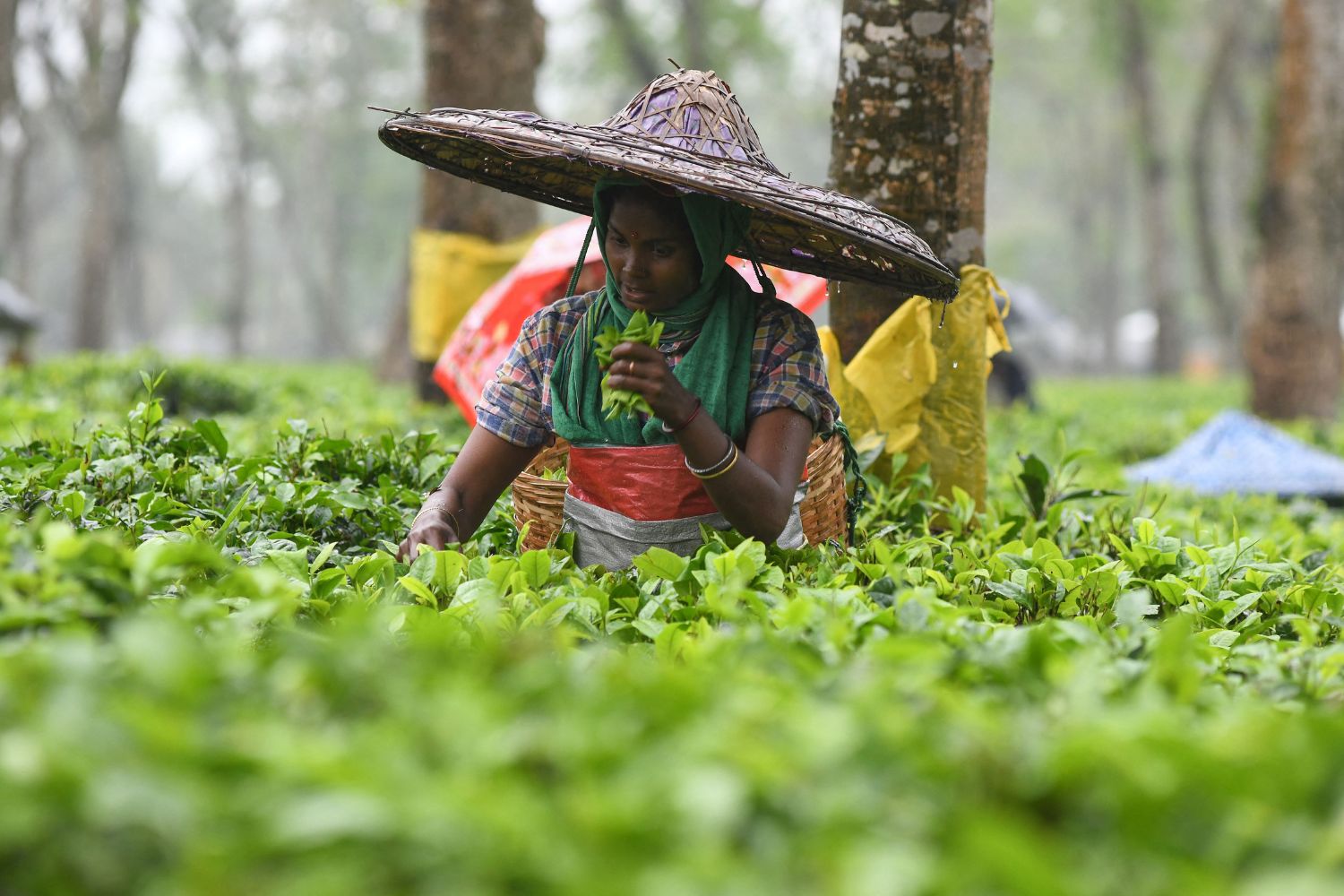India, the world’s second-largest tea producer, is experiencing a significant surge in tea prices. This spike is primarily attributed to extreme weather conditions that have severely impacted tea production, leading to a notable reduction in output. The tea industry, crucial to India’s economy and employment, is facing unprecedented challenges that have reverberated through both local and international markets.
The tea-growing regions of India, particularly Assam and West Bengal, have been hit hard by erratic weather patterns. Unseasonal rainfall, prolonged droughts, and severe heatwaves have disrupted the delicate balance required for optimal tea cultivation. These regions depend on a predictable climate to produce high-quality tea, but climate change has introduced a level of unpredictability that poses a serious threat to the industry.
In Assam, which produces more than half of India’s tea, excessive rainfall during the monsoon season led to waterlogged fields, damaging tea plants and reducing yields. Conversely, the pre-monsoon period saw drought-like conditions that stressed the plants and further diminished production. West Bengal faced similar issues, with unseasonal weather leading to a drop in tea leaf quality and quantity. The reduction in tea output has led to a significant increase in prices. According to the Tea Board of India, the average price of tea has surged by 25% compared to the previous year.
This price hike has been felt across the supply chain, from producers to consumers. Export prices have also risen, affecting global markets and leading to higher costs for international buyers. For small tea growers and workers in tea plantations, the economic consequences are severe. Many rely on tea production for their livelihoods, and the reduced output translates to lower incomes and financial instability. The increased prices, while potentially beneficial for some producers, do not compensate for the overall loss in production volume.
The rise in tea prices has had a ripple effect on the market. Domestic consumers are facing higher costs for their daily cup of tea, a staple in many Indian households. This increase is particularly burdensome for lower-income families who spend a significant portion of their income on necessities. Internationally, India’s tea exports have become more expensive, affecting major importers such as Russia, the United Kingdom, and the Middle East.
These countries are now looking to other tea-producing nations like Sri Lanka and Kenya to fill the gap, but these alternatives also face their own challenges with climate change and production constraints. In response to these challenges, the Indian tea industry is exploring various adaptation and mitigation strategies. Efforts are being made to develop more resilient tea plant varieties that can withstand extreme weather conditions. Research institutions and agricultural experts are working together to provide farmers with better tools and knowledge to adapt to changing climates.
ALSO READ: Prime Minister Modi discusses India’s trade imbalance with Russia
Water management practices are being improved to ensure that tea plantations can cope with both drought and excessive rainfall. Techniques such as rainwater harvesting and drip irrigation are being promoted to optimize water usage and protect tea plants from water stress. Additionally, there is a growing emphasis on sustainable and organic farming practices. These methods not only improve the resilience of tea plantations but also cater to the increasing demand for high-quality, environmentally friendly tea products.
The Indian government and industry bodies are taking steps to support the tea sector during this crisis. Financial aid and subsidies are being provided to small tea growers to help them cope with the loss of income and invest in adaptive measures. The Tea Board of India is also working on initiatives to promote Indian tea in international markets, ensuring that demand remains strong despite the price increase. Furthermore, collaborations with international organizations and climate experts are being strengthened to address the broader issue of climate change.
By participating in global efforts to combat climate change, India aims to secure the future of its tea industry and protect the livelihoods of millions of people dependent on it. The current crisis in India’s tea industry highlights the urgent need for a comprehensive approach to climate adaptation and mitigation. While immediate measures are necessary to support growers and stabilize prices, long-term strategies are crucial to ensure the sustainability of tea production. Climate change is an ongoing challenge that will continue to affect agriculture worldwide.
For the tea industry, this means investing in research and development, improving agricultural practices, and fostering resilience among tea-growing communities. It also involves engaging with policymakers to implement effective climate action plans and secure the necessary resources for adaptation efforts. As the global demand for tea continues to grow, India has the potential to maintain its position as a leading tea producer. By addressing the challenges posed by extreme weather and climate change, the country can ensure a stable supply of high-quality tea for both domestic and international markets.
The resilience and adaptability of India’s tea industry will be key to navigating this complex and evolving landscape. India’s tea prices have soared as extreme weather conditions have slashed output, presenting significant challenges to the industry and its stakeholders. The economic impact is far-reaching, affecting everyone from small growers to international buyers.
However, with proactive adaptation and mitigation strategies, supported by government and industry efforts, the tea sector can overcome these obstacles and continue to thrive in the face of climate change. The future of India’s tea industry depends on its ability to adapt to changing climates, invest in sustainable practices, and build resilience amongst its communities. By addressing these issues head-on, India can safeguard its tea heritage and ensure that the world continues to enjoy its beloved cup of Indian tea.
ALSO READ: India sees its population demographic change













